Building
Information
Modelling
Data-centric design and holistic collaboration
Building Information Modelling (in short BIM) is the high ideal of a fully synchronised information-based process in a more and more digitally driven, built environment. It is the necessary evolution of our industry, and therefore we do not see it per se as a service but in its most basic state of things as a matter of course.
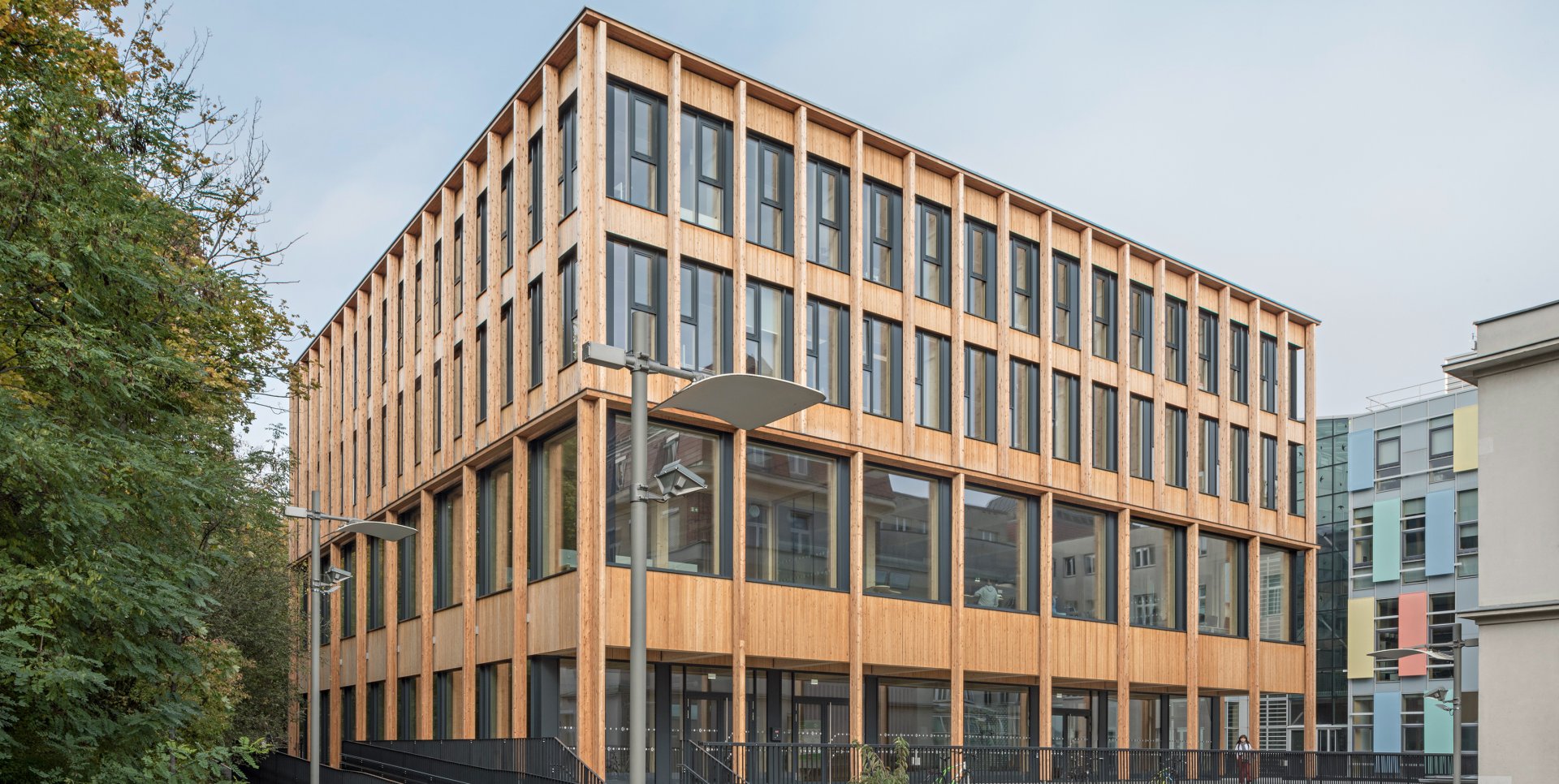
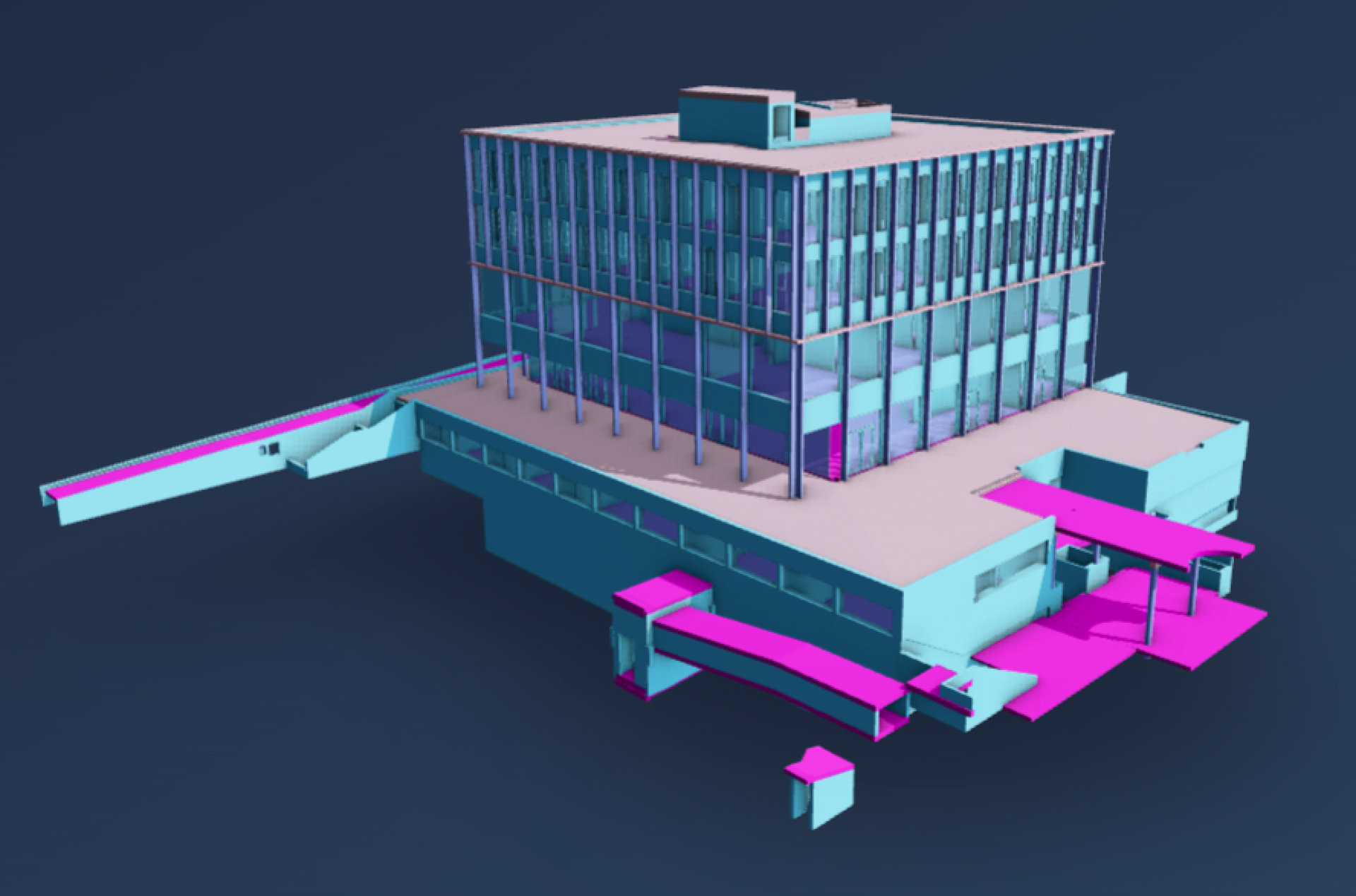
BIM as an adaptive digital process
We have always been striving towards a technology-assisted design approach, which materialises throughout the various projects. We are experienced in working in contractual open and native BIM projects in file- and cloud-based environments.
BIM is not a rigid software technology but an adaptive digitally assisted process; it needs an open mindset for the set-up and execution. We have a solid commitment to settled project-specific agreements.
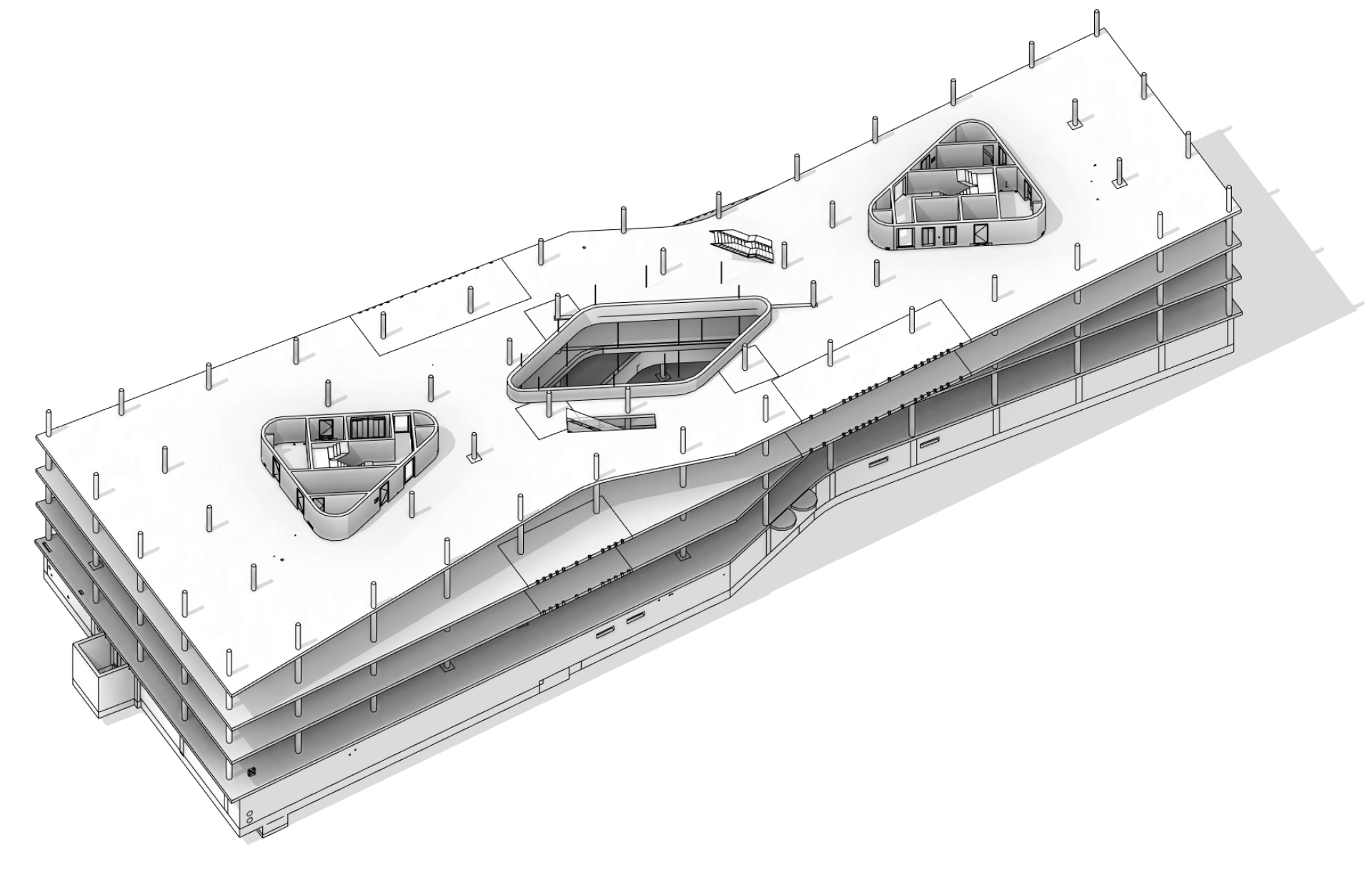
Construction-ready designs for prefabrication and on-site construction
As we are designing buildings not only using design analysis but to make them constructible in the best possible and holistic way, we are leveraging our design expertise and the most advanced tools on the market. Every project is designed in BIM methodology, based on our office standards or requirements formulated in the employer information and BIM execution plans.
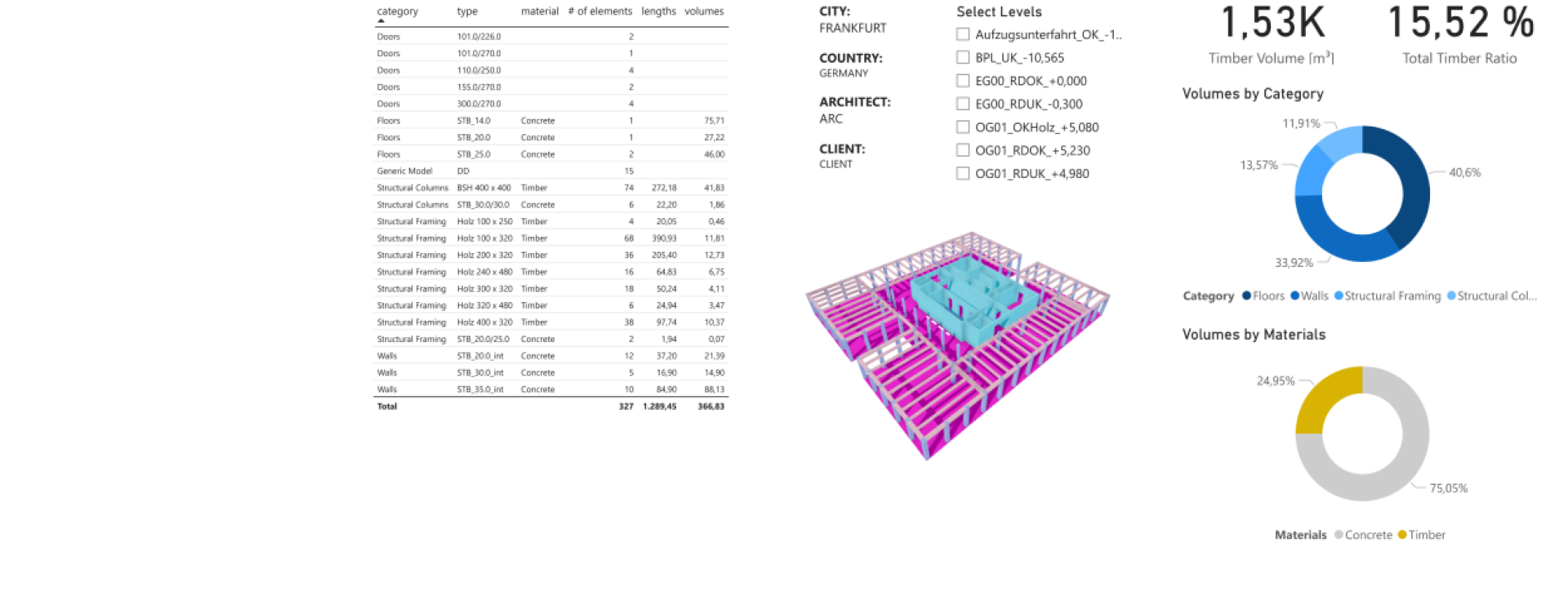
Validation and verification of our designs by leveraging data
Model-based design data will be more critical in the Architecture, Engineering and Construction (AEC) industry as it allows for more informed decisions in the early design phases, where these decisions also have their most significant impact.
As proper data extraction and evaluation aren't guaranteed by default or by pushing a button, we ensure proper model quality beforehand by leveraging checking routines based on our templates and tools.
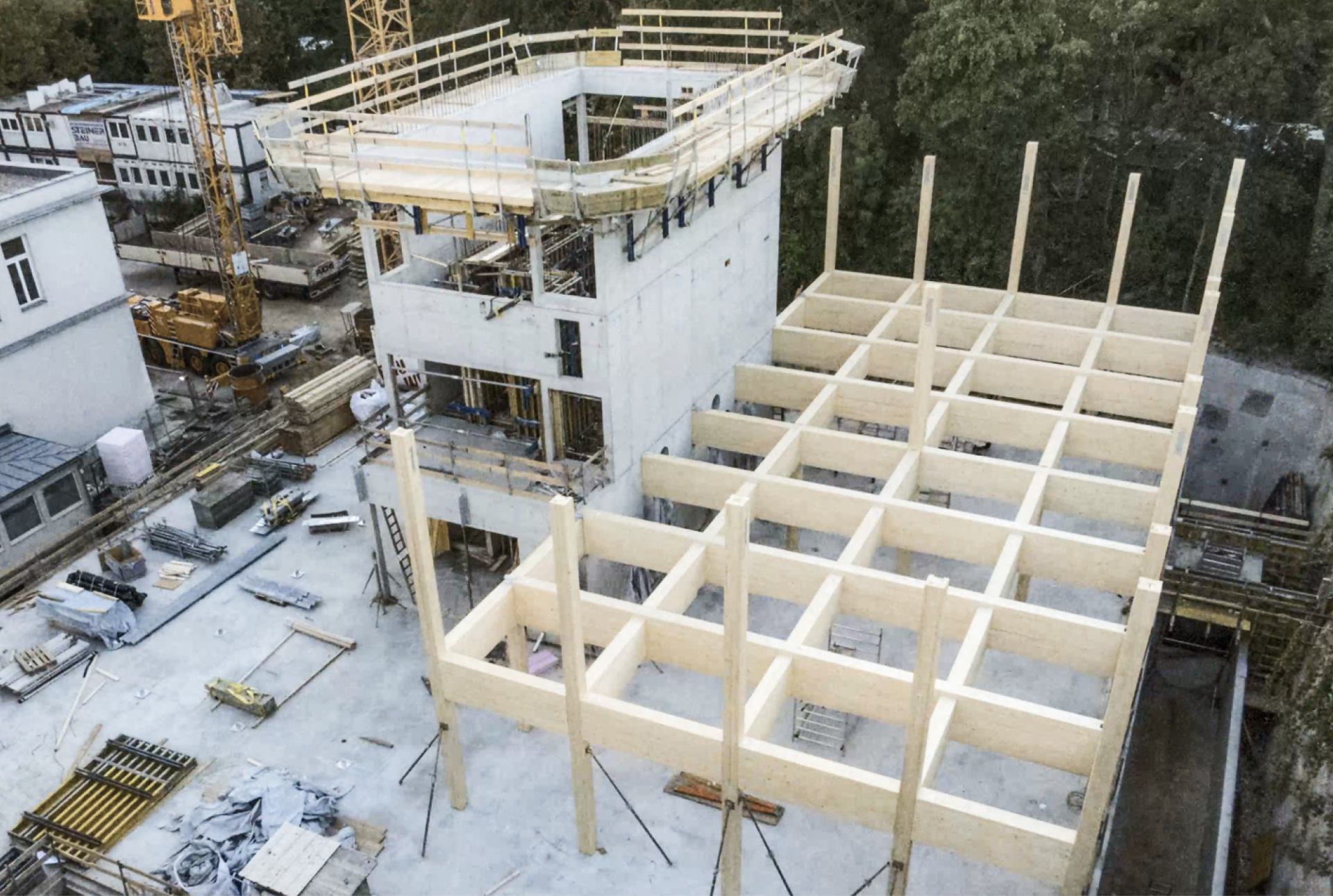
B+G × BIM
We started the company-wide BIM implementation in 2014 and have since developed and improved standards, workflows, and custom tools. With the examples below, we want to showcase a selection of our major milestone projects.
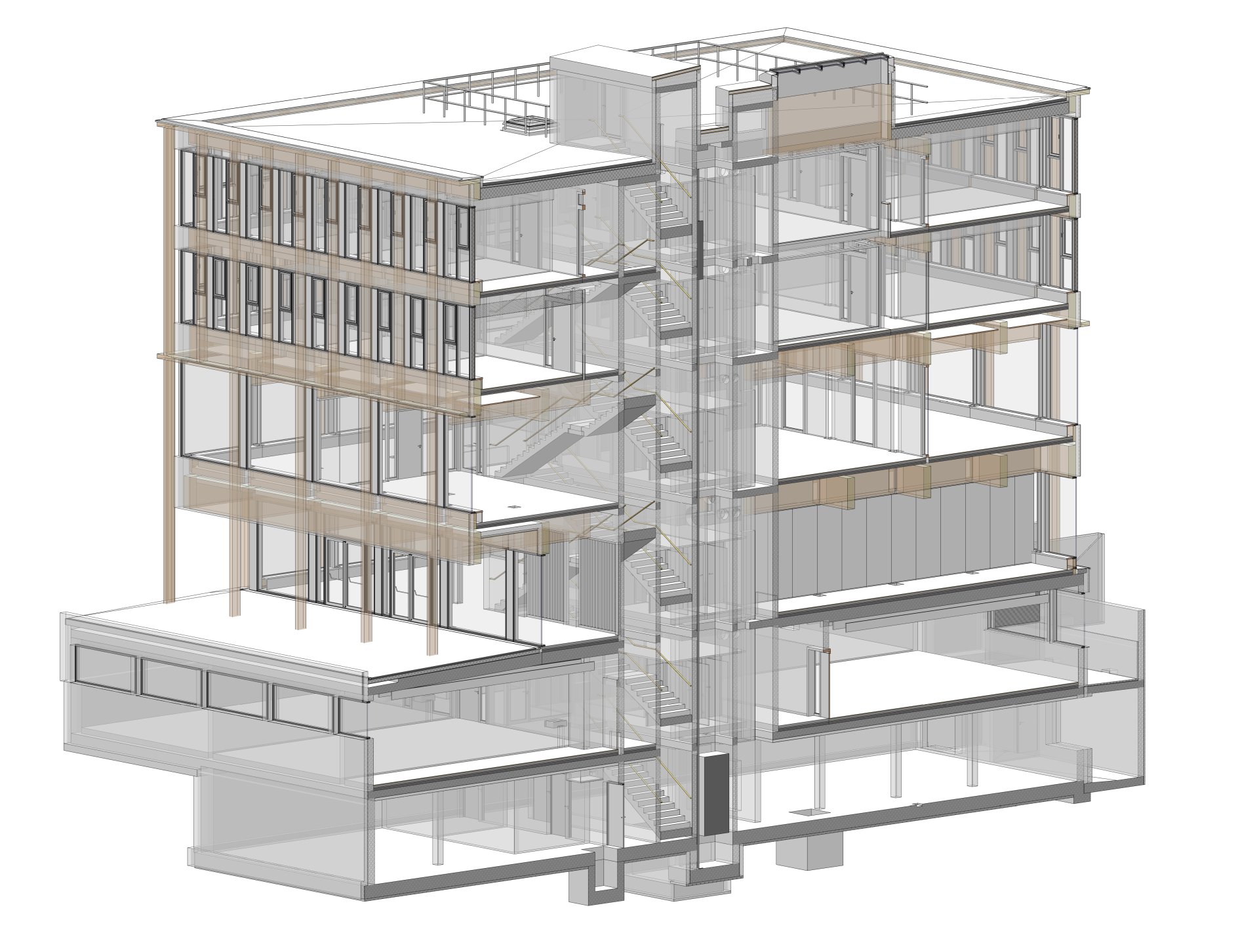
Ilse Wallentin Haus – BOKU seminar centre
This university expansion building was planned in close collaboration with the architects. Both teams using the same software solution allowed for seamless integration and coordination of the BIM models. The coordinated MEP model contributed to a building process without any significant necessary adaptions.
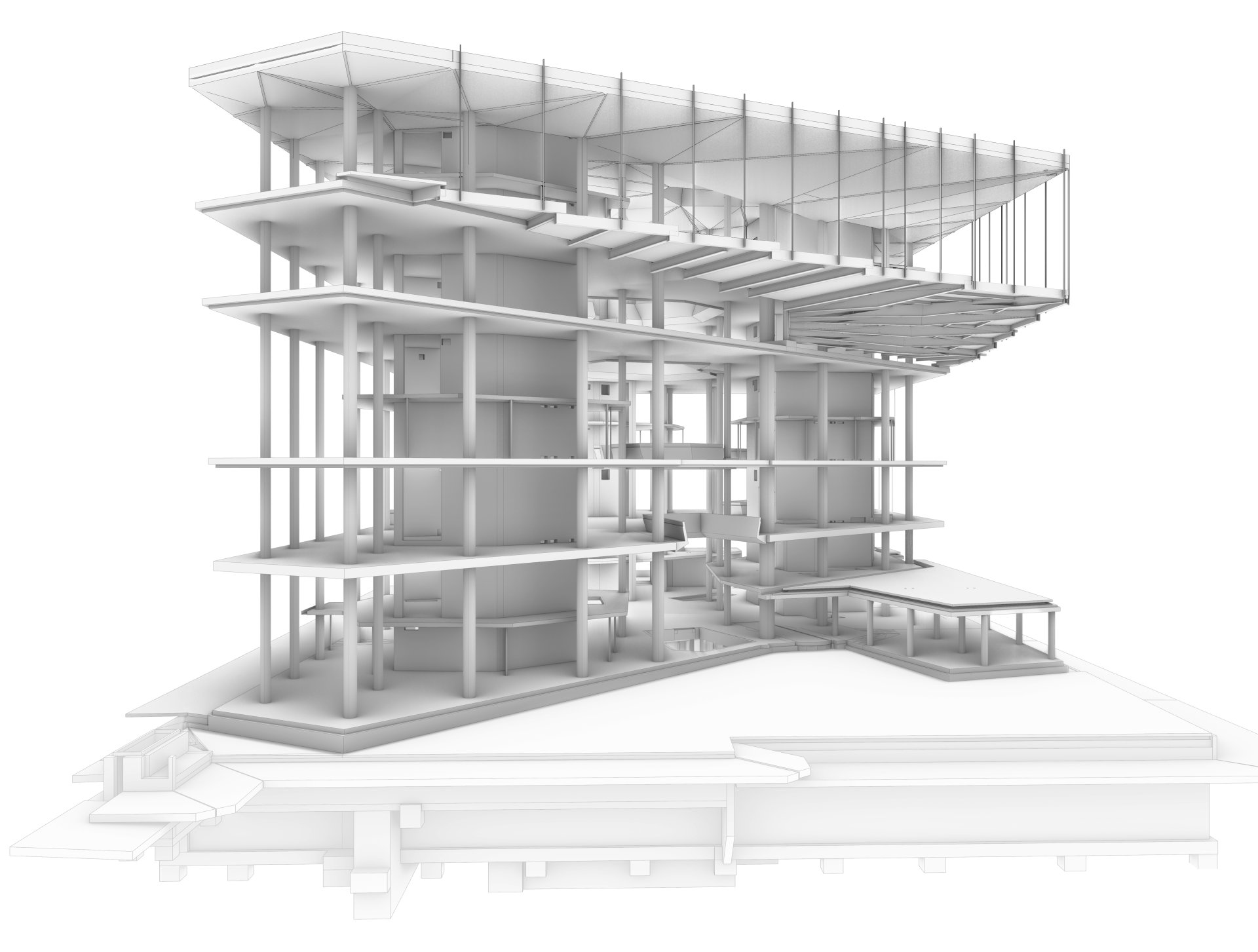
Deichman Bjørvika – Main Library
The characteristic feature of the shell construction is the folded concrete roof construction with the ramp below, which is suspended into the roof by tension rods. The ramp stretches as a large spiral staircase from the fourth to the fifth floor and floats above the main library entrance. As is now the case for all public projects in Norway, BIM planning was a central component of the entire project. The supporting structure was already developed as a parametric model in the early phases.
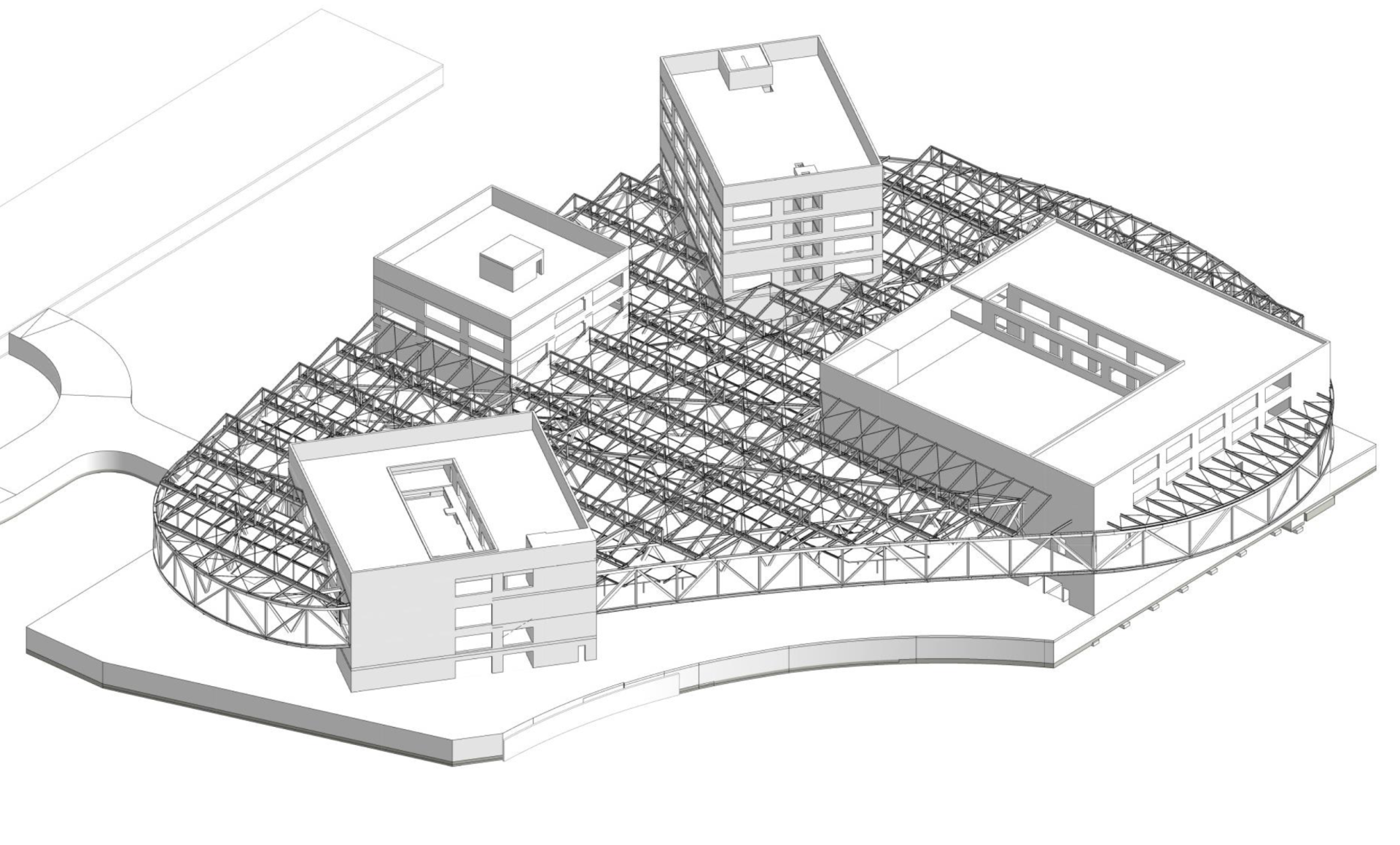
Campus RTS
The Radio Télévision Suisse (RTS) campus consists of four buildings supporting a suspended steel structure 7 m above the ground level. The direct interoperability between the parametric calculation model and the BIM model made it possible to test numerous configurations of the Warren trusses to optimise their position from a geometric and structural perspective.
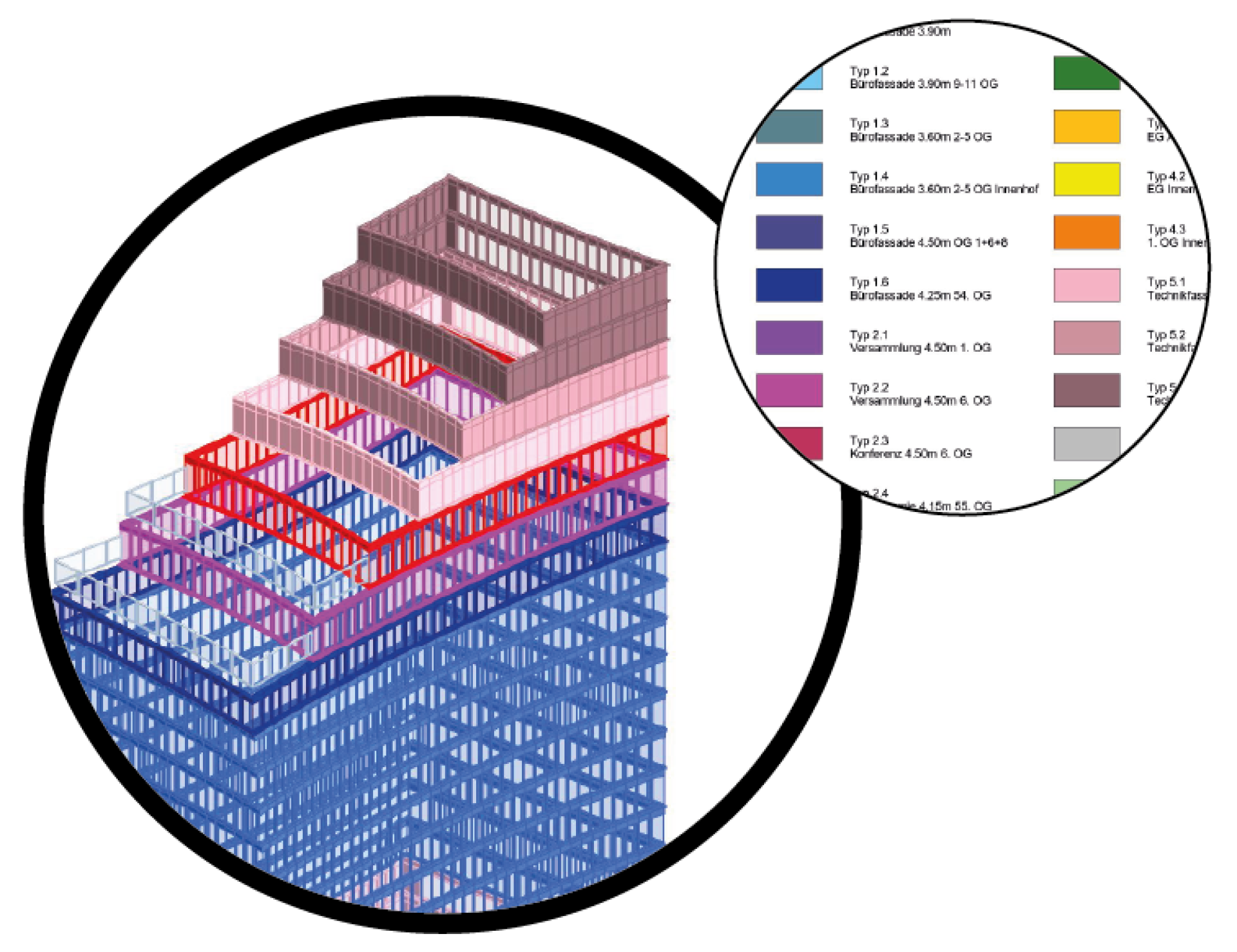
Elbtower
The façade of the Elbtower in Hamburg is the first large-scale BIM project of our façade department. The goal is to rationalise the geometry of the façade elements, optimise them based on the chosen construction system and reduce the number of unique elements significantly. Due to the complexity of the façade geometry, the project was generated with Dynamo for Revit and designed in close collaboration with our Design Technology department.
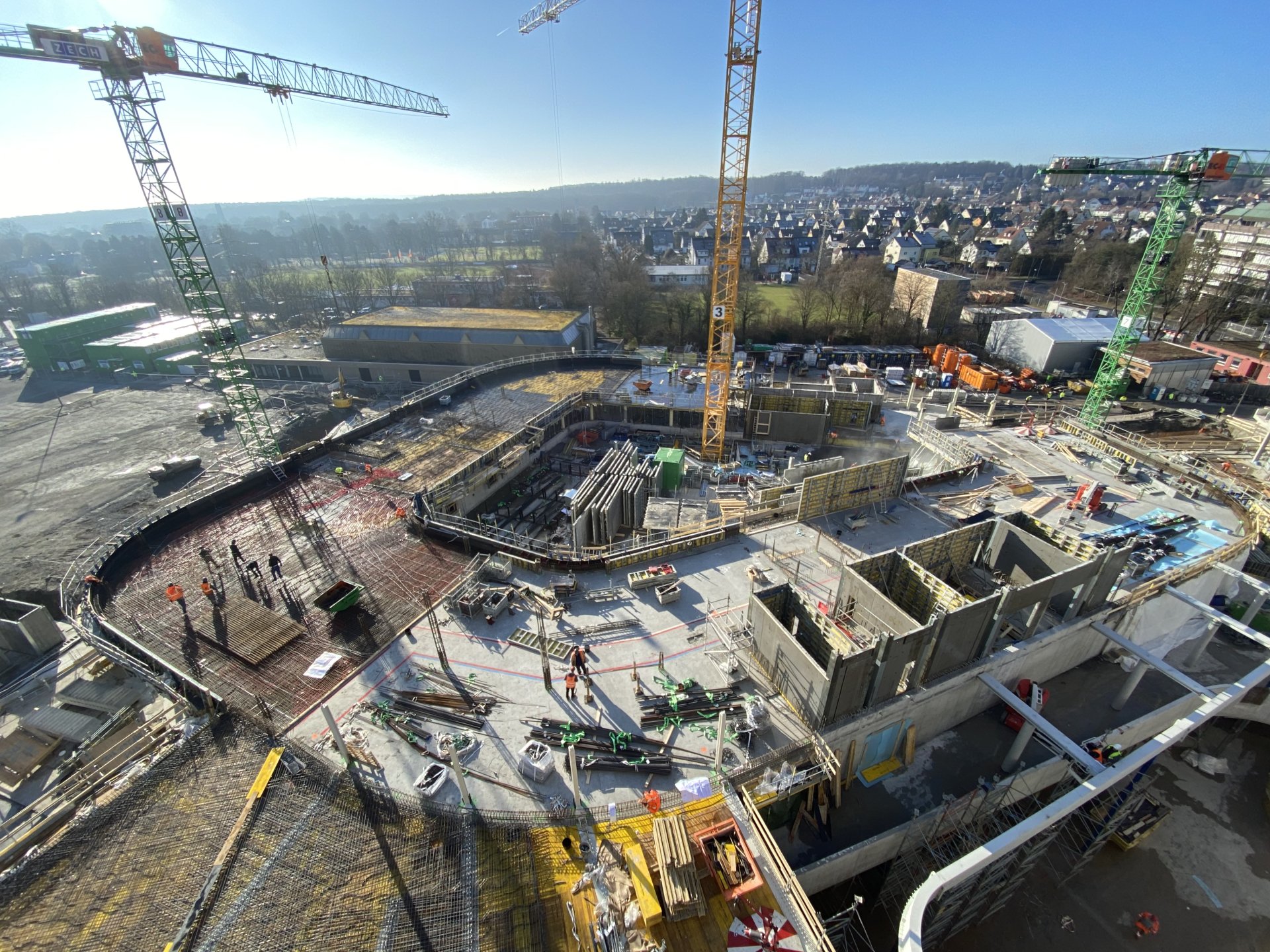
Allianz Park Stuttgart
For this project, we delivered our first large-scale open BIM project. We were able to leverage model-based coordination and planning processes to reduce the efforts of late problem-solving on the construction site.